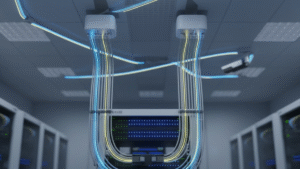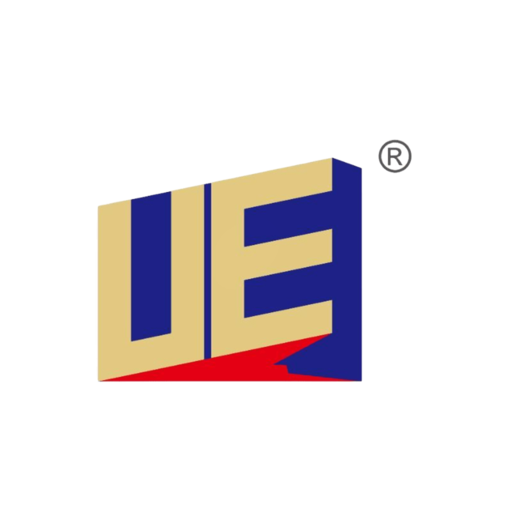Power supplies are essential in electronic and electrical systems, converting electrical energy into the required voltage and current for different devices. The two main types of power supplies are switching power supplies and linear power supplies. Each has unique characteristics, advantages, and disadvantages, making them suitable for different applications.
Understanding the differences between these two types of power supplies is crucial for engineers, manufacturers, and consumers to choose the right power source for their needs.
1. What is a Linear Power Supply?
A linear power supply (LPS) is a type of power supply that converts AC (Alternating Current) voltage to a lower DC (Direct Current) voltage using a transformer, rectifier, and voltage regulator.
How a Linear Power Supply Works
- Step-Down Transformer: Converts high-voltage AC power from the mains supply to a lower AC voltage.
- Rectifier: Converts AC voltage to pulsating DC voltage.
- Filtering: A capacitor smooths out fluctuations, providing a stable DC output.
- Linear Voltage Regulator: Maintains a constant DC voltage by dissipating excess energy as heat.
Advantages of Linear Power Supplies
- Low Noise and Ripple: Provides clean and stable output, ideal for sensitive applications.
- Simple Design: Easy to build and maintain due to fewer components.
- Fast Response Time: Quickly adjusts to changes in load conditions.
Disadvantages of Linear Power Supplies
- Inefficiency: Wastes energy as heat, leading to lower efficiency (typically 30-50%).
- Bulky and Heavy: Requires large transformers and heat sinks for cooling.
- Limited Power Output: Not suitable for high-power applications due to excessive heat generation.
2. What is a Switching Power Supply?
A switching power supply (SPS) is a more advanced type of power supply that converts AC to DC using high-frequency switching regulators. It is widely used in modern electronics due to its high efficiency and compact design.
How a Switching Power Supply Works
- AC Input and Rectification: Converts AC power to DC power.
- High-Frequency Switching: Uses a transistor to switch the power on and off rapidly (typically 20kHz to several MHz).
- Step-Down Transformer: Reduces the voltage to the required level at high frequency.
- Rectification and Filtering: Converts high-frequency AC back to DC and smooths it for stable output.
- Feedback and Regulation: Adjusts output voltage dynamically based on load conditions.
Advantages of Switching Power Supplies
- High Efficiency: Converts energy efficiently with minimal heat loss (typically 80-95%).
- Compact and Lightweight: Uses smaller transformers and fewer cooling components.
- Wide Input Voltage Range: Can operate on a broad range of AC voltages (e.g., 100V–240V).
- High Power Output: Suitable for industrial, medical, and telecommunications applications.
Disadvantages of Switching Power Supplies
- Electromagnetic Interference (EMI): Generates noise due to high-frequency switching.
- Complex Design: Requires more components, making it harder to repair.
- Potential Ripple and Transients: May introduce minor voltage fluctuations that can affect sensitive equipment.
3. Key Differences Between Switching and Linear Power Supplies
| Feature | Linear Power Supply | Switching Power Supply |
|---|---|---|
| Efficiency | Low (30–50%) due to heat dissipation | High (80–95%) with minimal heat loss |
| Size & Weight | Large and heavy (requires big transformers) | Small and lightweight (uses high-frequency components) |
| Heat Generation | High, requires heat sinks | Low, minimal heat dissipation |
| Complexity | Simple design, easy to repair | Complex design, harder to repair |
| Noise & EMI | Very low noise, ideal for sensitive applications | Generates electromagnetic interference (EMI) |
| Power Output | Limited to low-power applications | Suitable for high-power applications |
| Cost | Lower for low-power applications | Higher initial cost but more efficient in long-term |
4. Applications of Linear and Switching Power Supplies
Where are Linear Power Supplies Used?
Linear power supplies are best for applications where noise and ripple must be minimized. Common uses include:
- Audio Equipment: High-fidelity amplifiers and sound systems require low-noise power sources.
- Laboratory Equipment: Used in precision measurement instruments and testing devices.
- Medical Devices: Certain medical imaging and diagnostic tools require extremely stable power.
- Communication Systems: Radio transmitters and sensitive RF circuits benefit from the low noise of linear power supplies.
Where are Switching Power Supplies Used?
Switching power supplies are preferred for high-efficiency and compact applications, including:
- Computers and IT Equipment: Used in laptops, servers, and network devices.
- Industrial Automation: Powers PLCs, motor drives, and robotics.
- Consumer Electronics: Found in TVs, gaming consoles, and smartphones.
- Telecommunications: Used in base stations and signal processing equipment.
- Renewable Energy Systems: Powers inverters and solar charge controllers.
5. Choosing Between a Linear and Switching Power Supply
When selecting a power supply, consider the following factors:
- Efficiency Needs: If energy efficiency and heat dissipation are concerns, a switching power supply is the better choice.
- Size and Portability: For compact and lightweight designs, a switching power supply is ideal.
- Noise Sensitivity: If low noise is required, such as in medical or audio applications, a linear power supply is preferable.
- Budget Constraints: For low-power applications, linear power supplies may be more cost-effective.
- Power Requirements: For high-power applications, switching power supplies offer better performance and scalability.
6. Future Trends in Power Supply Technology
As technology advances, both linear and switching power supplies are evolving:
- Higher Efficiency Designs: New semiconductor materials like GaN (Gallium Nitride) and SiC (Silicon Carbide) are improving efficiency in switching power supplies.
- Digital Power Control: Smart power management systems are integrating digital controllers for real-time optimization.
- Wireless Power Supply: Innovations in wireless charging technology are expanding the potential of power conversion systems.
- Eco-Friendly Designs: Energy-saving regulations are pushing manufacturers to develop greener and more sustainable power supply solutions.
Both linear and switching power supplies have their strengths and are suited for different applications.
Linear power supplies are preferred for low-noise, high-stability environments, while switching power supplies dominate modern electronics due to their efficiency and compact size.
Choosing the right power supply depends on application requirements, efficiency needs, size constraints, and budget considerations.
With continuous advancements in power supply technology, future designs will further optimize performance, energy savings, and reliability across various industries.




